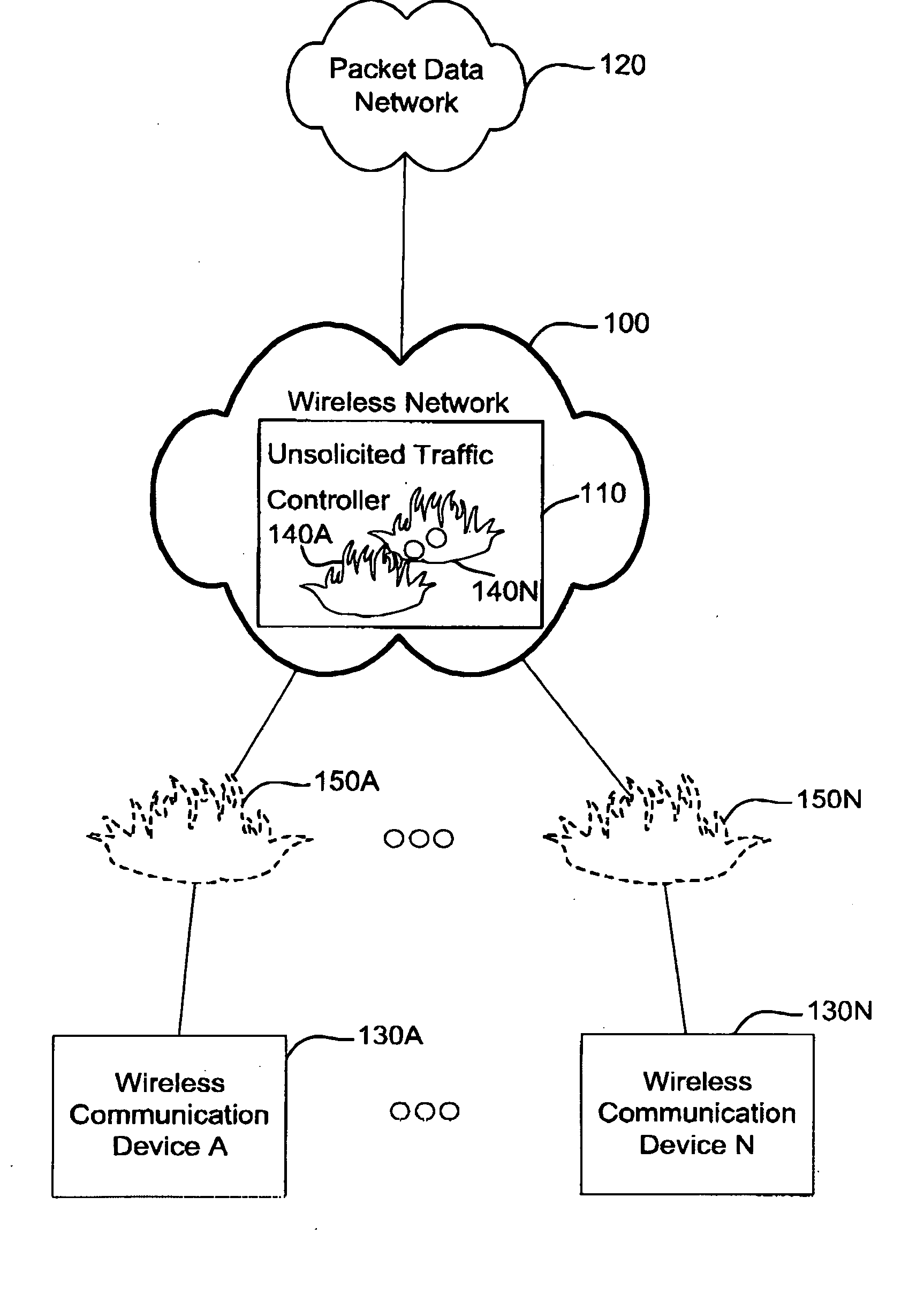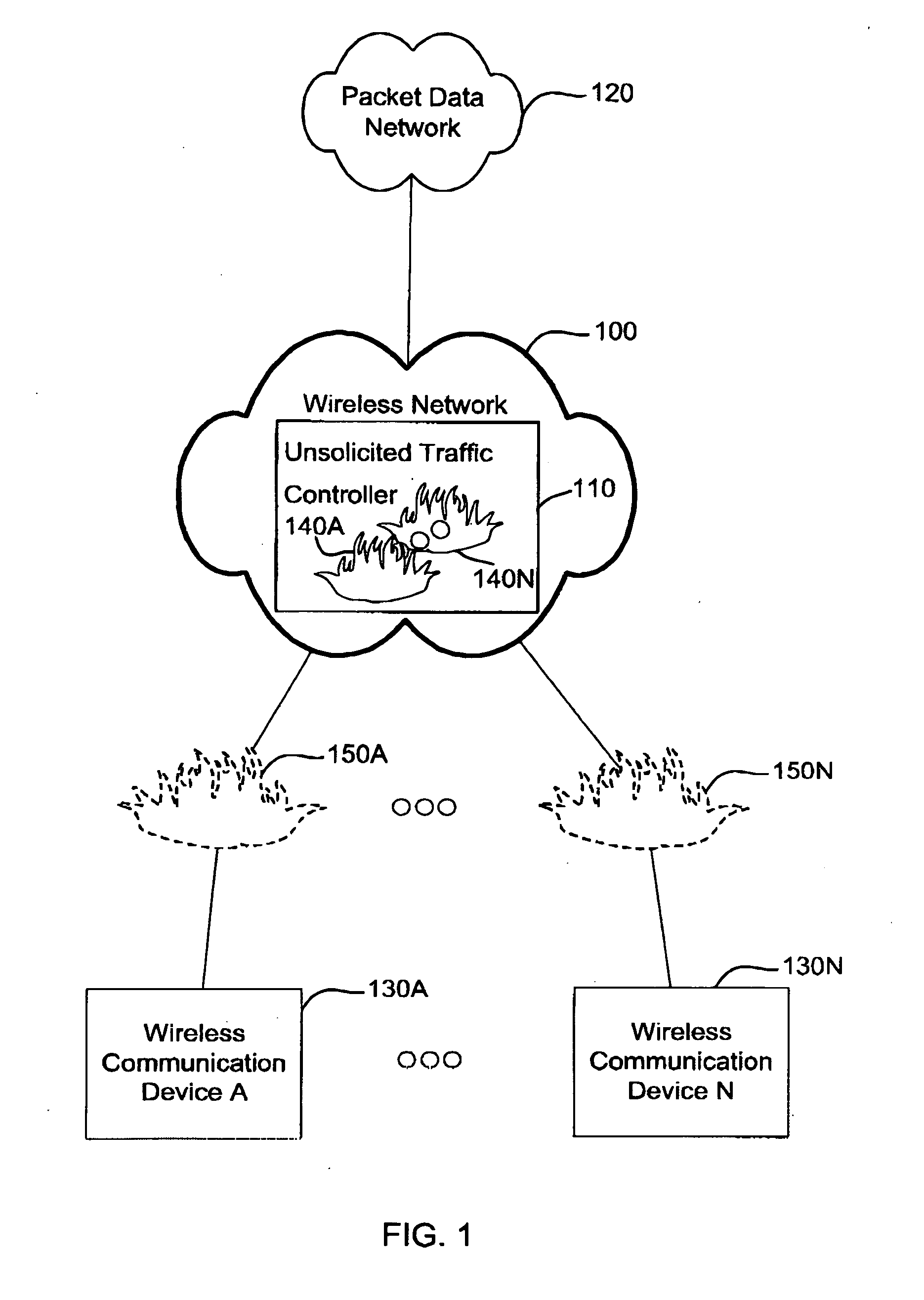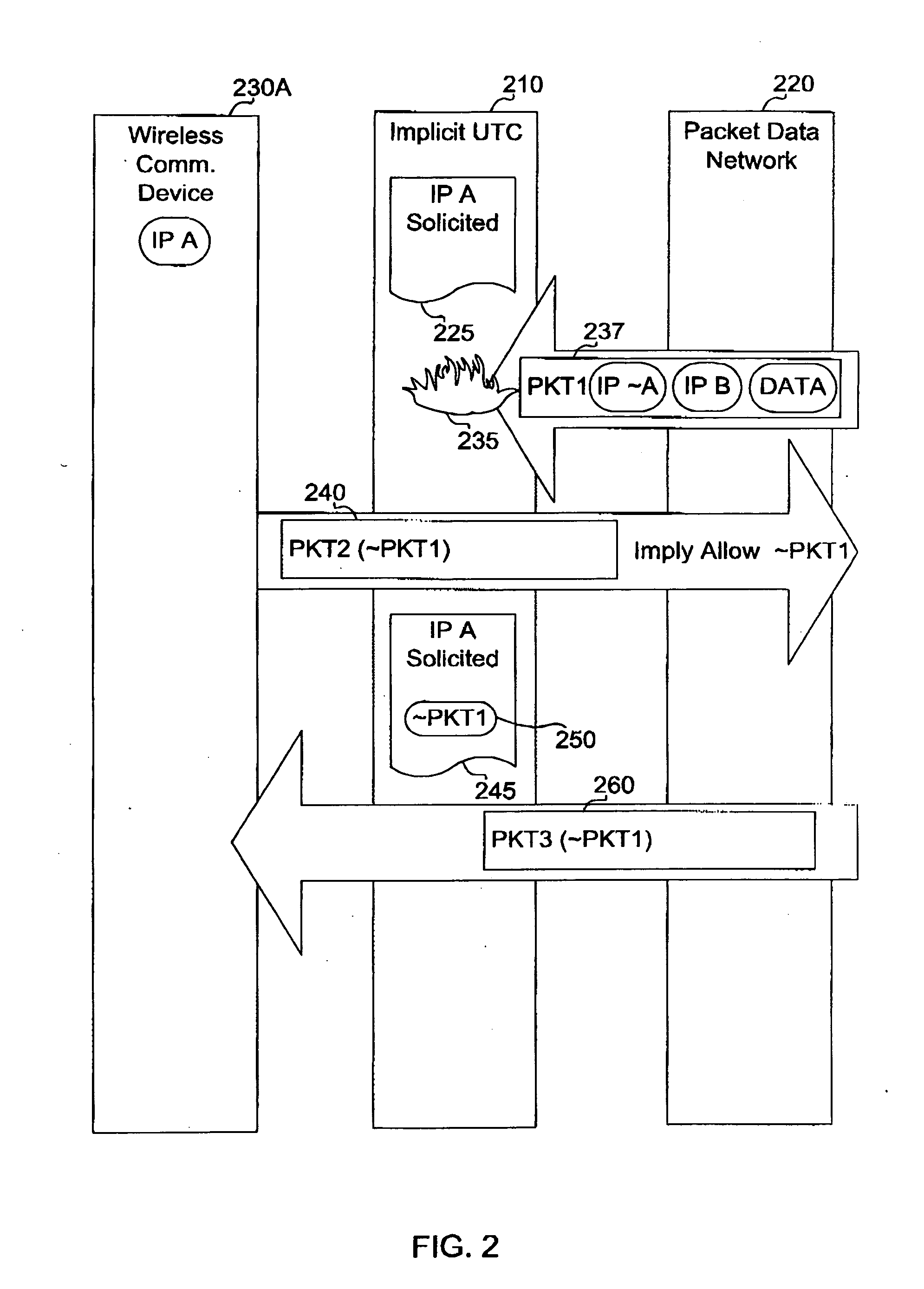Apparatus and method of controlling unsolicited traffic destined to a wireless communication device
a wireless communication device and wireless communication technology, applied in the field of wireless communication techniques, can solve the problems of not preventing unsolicited traffic initiated from within the private address space from reaching the wireless communication device, and the technique traditionally used with non-wireless devices may be inappropriate, and the wireless communication device is known to receive unsolicited traffi
- Summary
- Abstract
- Description
- Claims
- Application Information
AI Technical Summary
Benefits of technology
Problems solved by technology
Method used
Image
Examples
Embodiment Construction
[0030] Referring now to the drawings, FIG. 1 is a block diagram illustrating a wireless network including an embodiment of an unsolicited traffic controller (UTC), provided in accordance with the present application. The block diagram shows a wireless network 100 coupling a packet data network 120 with wireless communication devices 130A . . . 130N, and coupling wireless communication devices to one another, thereby enabling traffic to flow to and from packet data network 120 from and to wireless communication devices 130A . . . 130N, and enabling traffic to flow to and from one wireless communication device 130A to and from another wireless communication device 130N.
[0031] Wireless network 100 includes an unsolicited traffic controller 110, provided in accordance with the present application, the purpose of which is to affect the manner that the coupling between wireless communication devices 130A . . . 130N to each other and to packet data network 120 occurs, so as to limit unsol...
PUM
 Login to View More
Login to View More Abstract
Description
Claims
Application Information
 Login to View More
Login to View More - R&D
- Intellectual Property
- Life Sciences
- Materials
- Tech Scout
- Unparalleled Data Quality
- Higher Quality Content
- 60% Fewer Hallucinations
Browse by: Latest US Patents, China's latest patents, Technical Efficacy Thesaurus, Application Domain, Technology Topic, Popular Technical Reports.
© 2025 PatSnap. All rights reserved.Legal|Privacy policy|Modern Slavery Act Transparency Statement|Sitemap|About US| Contact US: help@patsnap.com



